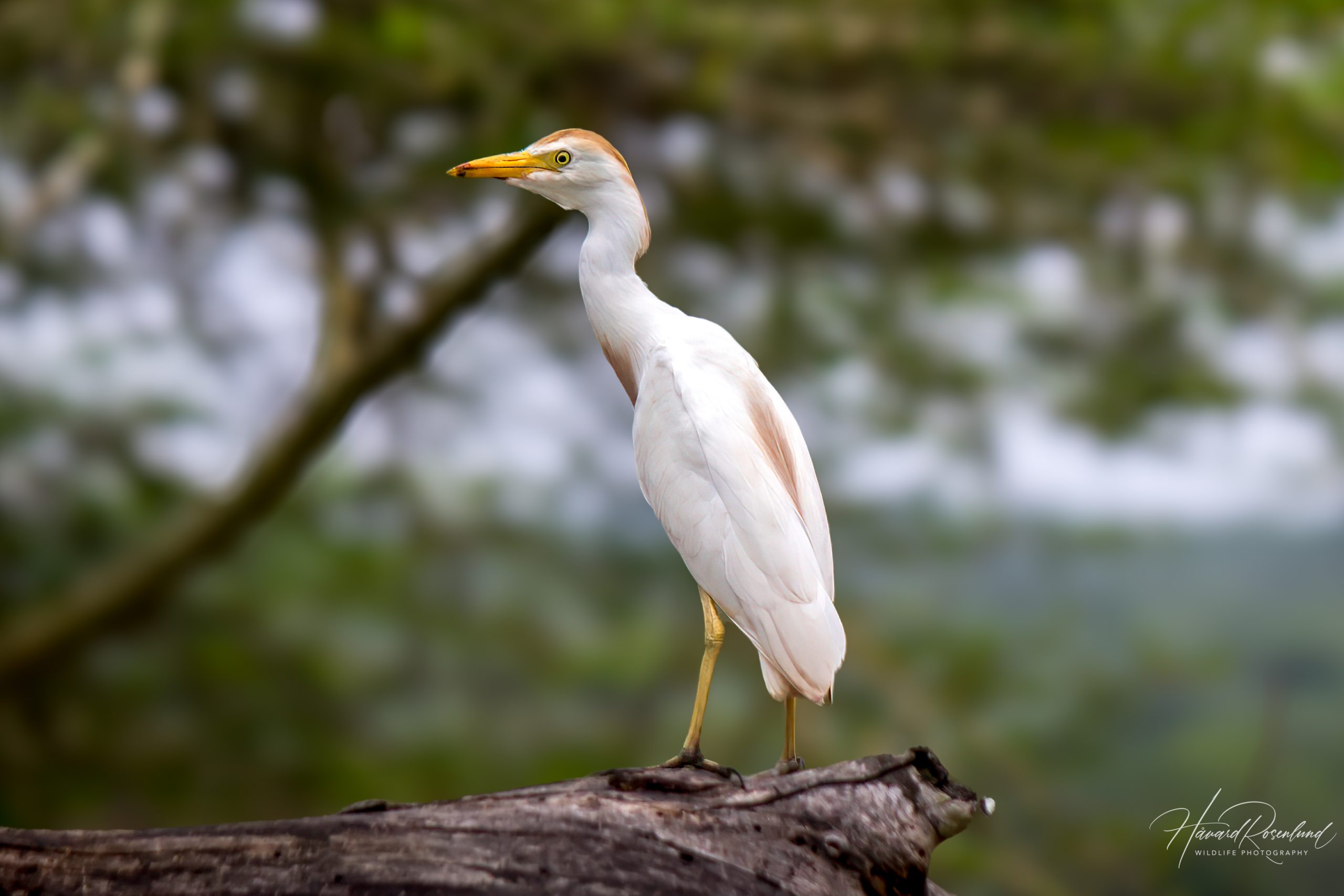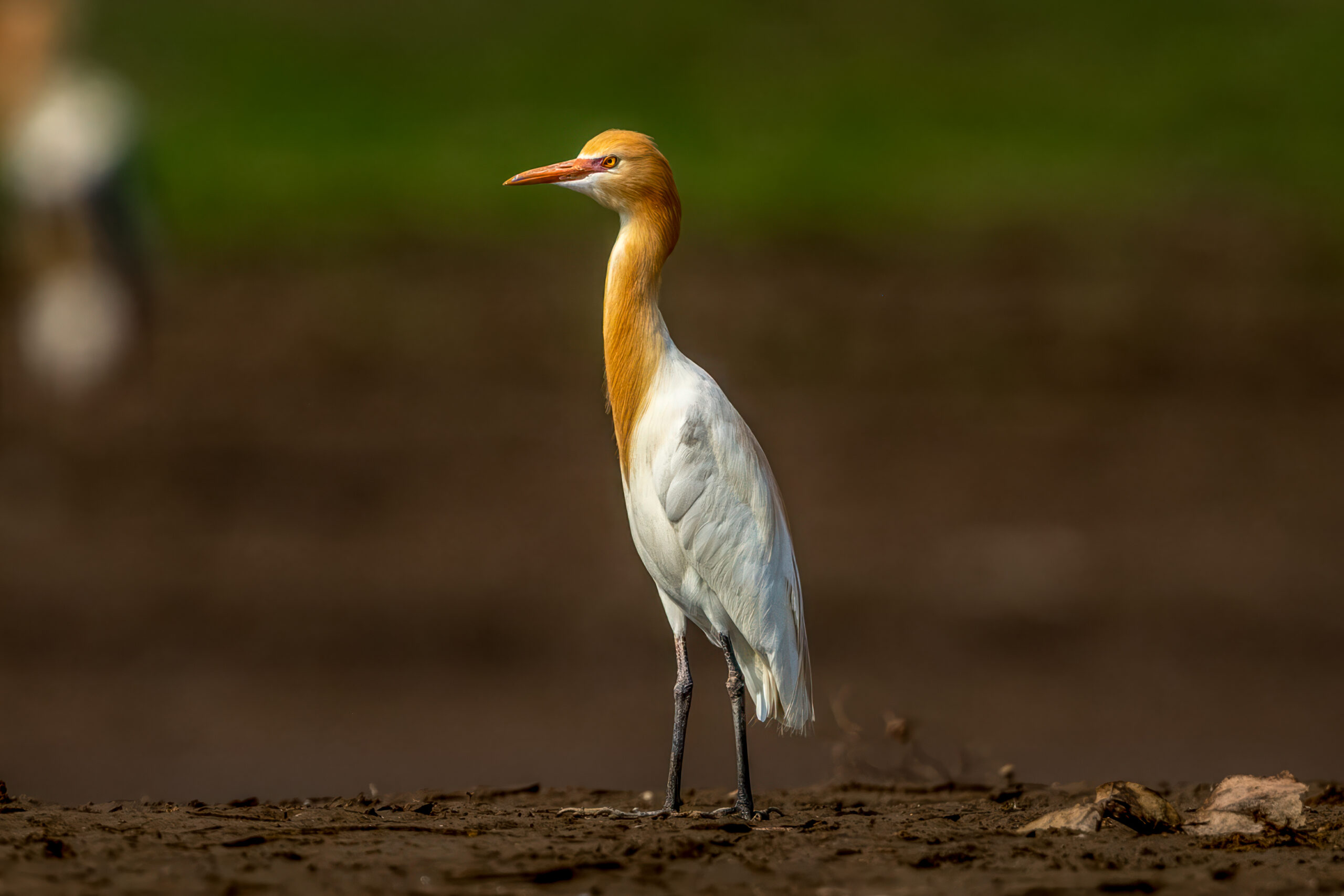Description
The western cattle egret (Bubulcus ibis) is a stocky medium-sized heron. It is native to Africa, southern Europe, and the Middle East. Over the last 100 years it has also expanded into the Americas, where it now has an extensive range in both North and South America. It reaches lengths of 46-56 cm (18-22 in) and a wingspan of 88-96 cm (35-38 in). It has a yellow bill, and the plumage is all white outside of breeding season. In breeding season, it gets orange to buff patches on its crown and neck, on its breast and on its back. The bill, eyes, and legs also turn bright red for a brief period before mating. The species is very similar to the eastern cattle egret (Bubulcus coromandus) found in most of tropical Asia and Australasia, and the two are often considered subspecies of the same species. The most obvious difference between the two species is the extent of the orange-buff patches during breeding season, which extends across the entire head, neck and throat of the eastern cattle egret. The bill of the eastern species is also longer on average.
Diet & habitat
The western cattle egret is closely associated to large grazing herbivores, as they feed on insects and other small animals that are disturbed by the larger animals. Since grazing animals are often found in open habitats, such as grasslands and savannas, that is also were you will find cattle egrets. Associated wild species can be elephants, buffaloes, and various antelopes, but cattle egrets are most often observed around domesticated cattle (hence the name). It is therefore found wherever there is cattle, as long as the climate is not too harsh or cold. As is common with other herons, the species do wade in shallow water and may look for food there, but it doesn’t need to be in close proximity to water as long as there are large herbivores nearby.
Nesting
Western cattle egret is probably the most social heron species, alongside the eastern cattle egret. They live and forage in flocks and breed in colonies. They often form colonies where other species of herons are established, at so called heronries. Breeding season changes with region, but generally coincides with the spring and summer months. Breeding pairs are only formed when the birds arrive at the breeding colony. Breeding colonies are often found in close proximity to water, but there are exceptions to this. The nests of pairs are often close to each other, and they can be built in trees, bushes, or in reeds. The nest is made by both male and female and is made up of sticks. They sometimes reuse nests from previous years. Somewhere between 1-9 eggs are laid (usually 3-4) and incubated for 21-26 days by both parents. Females may also lay some eggs in the nests of other cattle egrets. Chicks fledge at around 30 days old and are fully independent when around 45 days old.
Status
The western cattle egret is a very successful species of heron. Because of its association with cattle, it is doing well close to humans and have increased its range drastically over the last 100 years. It first settled in the Americas in the 1930s and has since then rapidly increased its range across much of both North and South America. Because of warmer climates it is continuing its range expansion into areas further north in both Eurasia and America. It is listed as least concern on the IUCN Red List, where it is lumped together with the eastern cattle egret as one singular species.





